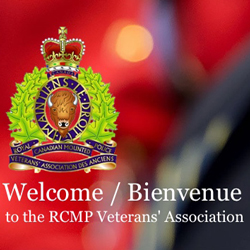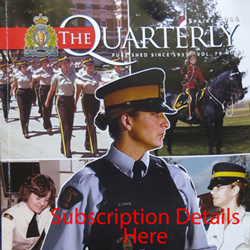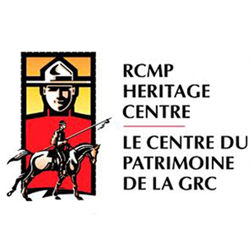Tribute to: Supt. Philip Primrose
This tribute is to a young Royal Military College of Canada graduate who was attracted to the North West Mounted Police. He served 30 years in the Force and later went on to become the 5th Lt. Governor of Alberta.
EARLY YEARS
Philip Carteret Hill Primrose was born on October 23, 1864 at Halifax Nova Scotia to the parents of Alexander and Elizabeth Primrose. Alexander Primrose was a barrister in Halifax Nova Scotia. After his father’s sudden death, Philip and his mother moved to Pictou Nova Scotia where he attended the Pictou Academy.
ROYAL MILITARY COLLEGE – KINGSTON
Upon graduating from the Academy, Philip was accepted to the Royal Military College of Canada at Kingston Ontario on September 7, 1881.
The Royal Military College (RMC) of Canada was established in 1876 and was modeled after the United States Military Academy at West Point. The RMC was staffed by British military officers and instruction was a course of study which paralleled that of the British Military College. In 1876, the College’s first class consisted of only 18 cadets.
Between 1876 and 1914, the majority of the RMC graduates secured civilian professions such as engineers. Only 4 graduates a year received commissions in the British Army.

1885 – Queen’s Commission to Corporal Philip Primrose (Source of image – RCMP Historical Collections Unit – “Depot” Division).
On June 30, 1885, Corporal Philip Primrose graduated from the Royal Military College as a Gentleman Cadet. According to his Diploma of Graduation, he was 5’11”, blue eyes and light complexion. Apparently, Philip had the choice of a commission in the British Cavalry, Infantry or Royal Artillery but his preference was to remain in Canada and had his sights set on the North West Mounted Police (NWMP).
In January 1885, Philip Primrose submitted his interest in the NWMP through the RMC Adjutant General who supported his application. Noted application was forwarded to the government officials in Ottawa.

1882 – Photograph of the original 18 graduates from the Royal Military College of Canada. Bowen Perry was a member of this class and later became the Commissioner of the North West Mounted Police, Royal North West Mounted Police and Royal Canadian Mounted Police (Source of image – Royal Military College – Kingston Ontario).
This career path had been undertaken by previous RMC graduates such as: Bowen Perry (NWMP Reg. O.44 – RMC Grad – 1882 – later to become Commissioner of the Force), Gilbert Sanders (NWMP Reg. O.52 – RMC Grad 1884) and Frederick Drayner (NWMP Reg. O.53 – RMC Grad 1884).
JOINS THE FORCE
The appointment of commissioned officers in the NWMP was through a system of political patronage and geographical representation. According to Prime Minister John A. MacDonald “it has been his practice to choose men from three sources – experienced non-commissioned officers, likely officers of the Active Military and graduates of the military college in Kingston. He cited Supt. A.B. Perry as a fine example of the way in which the Mounted Police was benefitting from the Royal Military College.” [1]
In 1885, the NWMP accepted two recent graduates from the Royal Military College:
Inspector Zachary T. Wood (NWMP Reg. #O.54 – later to become Assistant Commissioner); and
Inspector Philip Primrose (NWMP Reg. #O.56).
The following image is a copy of the Order in Council appointing the new NWMP officers in 1885.

1885 – Canadian government’s appointment of new North West Mounted Police Commissioned Officers (Source of image – RNWMP Personal File of Supt. Philip Primrose)
In mid August 1885, Philip Primrose arrived at the NWMP Headquarters in Regina to be sworn in and receive his orientation.

1885 – NWMP Oath of Allegiance signed by Insp. Philip Primrose (Source of image – RNWMP Personal File of Supt. Philip Primrose).
It was a turbulent time in Regina when Philip arrived. The North West Rebellion had only ended at the end of June. The treason trial of the Metis leader Louis Riel was in the final stages. On September 18, 1885, Riel was found guilty and sentenced to be hung. After the appeals were exhausted, Louis Riel was hung at the NWMP Headquarters on November 16, 1885.
From Regina, Philip Primrose was transferred to Fort Saskatchewan for the next 13 years then to Wood Mountain, Calgary and then to Macleod. On May 27, 1890, he was appointed as a Justice Of The Peace in the North-West Territories.
At the outbreak of the Klondike Gold Rush in 1898, the Force rushed members to the Yukon to combat the flood of gold miners coming from Alaska into the Yukon. The two primary point of entry were the Chilkoot and White passes. Once over the passes, the gold miners would construct boats to transport their supplies down the Bennett Lake to Tagish Lake and Marsh Lake then to White Horse and beyond.

Photograph of the White Pass Summit :the United States & Canada boundary line with flags of each country. Members of NWMP in the photograph (Source of photo – RCMP Historical Collections Unit – “Depot” Division)
Superintendent Sam Steele decided to establish two primary Detachments to assert Canadian sovereignty – summits of Chilkoot and White passes.
The detachment at outpost at Tagish was to serve as a choke-point where all gold miners would be met by members of the Force. Members would record details like – names of miners, home address of each miner, name miners in each boat, quantity of supplies, etc…
In 1898, Inspector Philip Primrose was transferred to the Yukon and was ordered to create a new detachment at Stikine River. He lead a group of 20 men, 10 horses, 25 dogs and 80 tons of supplies.
Primrose’s group left Regina on the Canadian Pacific Railway to Vancouver and then sailed to Fort Wrangle Alaska on board the “S.S. Tees.” Upon debarking this ship, they arranged for the Hudson Bay “Glenora” ship to transport them to the Cottonwood Island at the mouth of the Stikine River. The group traveled 35 miles upstream to their point of destination.

1898 – Photograph of the cabins and tent camp of the NWMP Stikine River. Members in the photograph are Supt. Primrose and Comp. H.J. Woodside (Source of photo – RCMP Historical Collections Unit – “Depot” Division).
On March 8, 1898, he arrived in Strkine B.C. and made the following observation in a letter to Fred White (NWMP Comptroller):
“I also informed him I was locating a Police and Customs Post near the line on this site.
I have got my stores and horses at the 15 mile point, and there is only one or two ponies beyond it, but they are going single.
There is about 5 to 10 feet of snow on the ice and the water with a short way of the top of the snow, as it is simply impossible to do anything except to wait for better weather.
The snow on the land is from 10 to 15 feet.”
Once the snow had melt, the group commenced work to complete the construction of the newest NWMP Post – Stikine Detachment.
Inspector Philip Primrose was later transferred to Tagish Detachment which was commanded by fellow RMC classmate – Superintendent Zachary Wood. Their task was to rebuild the Detachment to a suitable size to accommodate the increasing size of the Detachment while at the same time overseeing the flood of gold miners.
By the summer of 1899, Tagish Detachment was self contained operations with 43 members and nine horse. The detachment included: a new quartermaster stores, hospital, married quarters single officer’s quarters, cow stale, hay corral, sergeant major’s quarters, sergeant’s mess and horse stable. All the buildings were built from local trees cut down and logged by Detachment members.
On October 14, 1899, Philip Primrose was promoted to the rank of Superintendent and placed in command of “H” Division. He in turn reported to another ex-RMC member – Superintendent Bowen Perry who was in command of the Yukon.

June 1900 – Photograph of Dawson NWMP Officers. Right side: Insp. Scarth, Supt. Primrose, Sergt. Major Fost, Lieut McLean; Left: Insp. Starnes, Col. Hemmins, Dr. Thompson (Source of photo – RCMP Historical Collections Unit – “Depot” Division).
In 1901, Philip Primrose was posted to Dawson as the Officer Commanding “H” Division which consisted of 103 members operating out of 18 detachments.
To maintain order in the Yukon, the police magistrates would administer severe punishment. Superintendent Primrose was one of these police magistrates.
“Theft, for example, which was common during the gold rush, was punished by sentences which seem extremely harsh by modern standards. The records of the police jail at Dawson, show many men given sentences of two to seven years for theft, and they generally served every day of their sentence. Vagrancy brought from two to six months on the woodpile. Sometimes the sentences were for thefts of quite small sums.” [2]
The inappropriate behavior of the regular members of the Force in the Yukon was also harshly dealt with by these police magistrates.
“The penalty for falling asleep while on guard duty in the corridor of the Dawson jail was two months’ hard labour. Braking Barracks generally brought a file of $20, about three weeks’ pay. Offences which showed the police in a bad light to members of the public brought harsher penalties. In the summer of 1901, for example, a constable was fined $15, given two months’ hard labour, and dismissed for being absent from duty, drunk and creating a disturbance in a house of ill-fame.” [3]
“The frequency of offences involving drunkenness and ‘loose women’ may be partly explained by the fact that during the rush the police lowered the standards for admission to the force and shortened the period of recruit training so that a number of half-trained men of unproven character went to the Yukon.” [4]
During this time in the Yukon, the Force was highly sensitive to attacks on their public image, and their authority rested on their reputation.
In the fall of 1901, anti-Canadian feelings were manifesting itself again. Rumours were circulating that the United States were plotting on absorbing the Yukon by force.
Then in the fall of 1901, Fred White (Comptroller for the Force) was advised of several articles relating to Superintendent Primrose which Mr. White had not been advised of through official communications with him. One of the articles in question appeared in the October 1901 edition of the Dawson City News:
MAJOR PRIMROSE – Arrested In Skagway For Being Drunk – Fined Ten Dollars
Skagway Papers Treat the incident Caustically and Suggest That He Should Serve A Term On The Wood Pile
SKAGWAY – Oct. 22 (1901) – Major Primrose of the N.W.M.P. celebrated his arrival here by getting intoxicated. As the result of insulting remarks the major was arrested and fined $10.
The Alaskan and Times of this place contains certain references to the incident. The Alaskan say that the major insulted a prominent lady and should be put to work on the wood pile to try the experience he administers to Americans.”[5]
According to the original Skagway article, Major Primrose was drunk and discovered in a puddle of water. While there, he was yelling out “to hell with the America people and the American flag.” According to the article, a local watchman arrested Primrose and dragged him off to jail. The following day, he appeared before Justice Dedroll and was fined $10. The same article concluded by stating:
“It goes without saying that if an American citizen had become intoxicated in Dawson and heaped insults on the territory flag. Maybe Primrose would have sentence him to the woodpile for three months.” [6]
Primrose failed to report the incident to the Commissioner nor to Mr. Fred White. Mr. White repeatedly asked for a response from Philip Primrose. In his response, Primrose admitted to having a few drinks and believed that he was doped by hostile Americans in the bar. Mr. White’s final response on this matter is included in a personal letter to Philip Primrose:

1902 – Personal letter to Superintendent Philip Primrose from NWMP Comptroller Fred White (Source of document (RNWMP Personal File for Philip Primrose).
In view of the negative Force publicity, Superintendent Primrose was transferred back to the Force headquarters in Regina when he recounted the intoxication incident to Commissioner Bowen Perry – also an ex-RMC graduate. No disciplinary entry was made on Superintendent Primrose’s Personal File.
While in Regina, Philip married Lily Deane (daughter of the currently servicing Superintendent Richard Deane) on January 8, 1902 and they eventually had four children.
Shortly thereafter, Superintendent Primrose was transferred to take command of “A” Division (Maple Creek) and two months later to Macleod where he remained until his retirement on April 15, 1915.
While in Macleod, Philip also continue to act as the police magistrate and sentenced both Force members and civilians to the local RNWMP Guardroom to serve their respective sentence.
His firmness and sentencing became legendary:
“Fifteen years of development and of ripening followed before this man was to present in their fullness all the shrewd, analytical, caustic, irascible qualities of his greatness, when he was known as ‘Two Twenty-eight’ (ten dollars fine and twenty-eight days, c.b. – confined to barracks), his common formula of punishment; or by his famous reply to a later commissioner: ‘You make ‘em, I break ‘em.’ During his long maturity, Superintendent Primrose’s command became a model to the Force.
His view of constabulary conduct were ascetic, an ideal he had not himself embraced at first, his Police standards severe. His knowledge of the Criminal Code was hardly matched and his application of it masterly. Under him men learned accuracy, learned to work for the shining sake of excellence. Their master’s praise was rare, but they were confident that their efforts were understood, appreciated, and abetted by this hawk-like genius so interestingly tinged with dyspepsia. He was scrupulously just, and though he might drive them, might increase the pace with flicks of sarcasm, Primrose’s fame equals the greatest in the estimation of the driven; which is fame indeed.” [7]
Superintendent Primrose also included some notable submissions to Commissioner Perry for inclusion in the Force’s 1906 and 1907 Report of the Royal North West Mounted Police to the Canadian government:
“With the exception of two cases, where two constables on different occasions were found guilty of striking the constable in charge of their detachments, the conduct of the division has been very good. There were five desertions during the year.
Owing to the shortage of men and the great amount of work it was found almost impossible to have drills. During June and July all the men in the post were put through squad drill in the early morning.” [8]
“On December 21 last, one corporal was reduce to the ranks and transferred from this division for being absent without leave and found in a house of ill-fame. On February 20, one constable attempted to desert, he was arrested on the train before he reached Lethbridge and was sentenced to six months’ imprisonment. Four constables deserted during the year. During September Regt. No. 4394, Constable S.D. Porteous, and Regt. No. 4368, Constable C. Taylor, were respectively sentenced to one month and six weeks imprisonment for being absent at watch-setting and not returning till brought back by escort. In their defense these two constables, being tried separately, contradicted each other’s story under oath in such a way that it was evident that they were lying. Both had been giving a great deal of trouble, and on your order they were dismissed at the expiration of their term of imprisonment. One other constable who had been transferred to this division in February from ‘K’ Division, after being sentenced to one month’s imprisonment, was, during September, sentenced to two months’ imprisonment for drunkenness while on detachment; this being his second offence of the same nature since his transfer, he was ordered by you to be dismissed at the expiration of his sentence.
With these exceptions the conduct of the members of this division had been good.” [9]
During his time at Macleod, he became a prominent landowner by purchasing several town lots and a section of land outside the city.

1913 – Photograph of Superintendent Philip Primrose (Source of photo – RCMP Historical Collections Unit – “Depot” Division).
In 1913, Philip Primrose was facing increasing medical problems and found it difficult to continue detachment inspections. As such, he was transferred to the Force Headquarters in Regina to organize the new Criminal Investigation Branch. In August 1913, he was granted a leave of absence to attend the Mayo Clinic at Rochester to undergo surgery to repair an undisclosed rupture and remove his appendix.
In December 30, 1914, Philip advised the Commissioner that he was seeking a medical pension and three months of leave so that he could proceed with a job offer to become the City of Edmonton’s Police Magistrate. Commissioner Bowen Perry supported this request and forwarded it onto the Force Comptroller in Ottawa. On January 13, 1915, the Comptroller advised that the Order In Council had approved Philip’s full pension, three months leave and the wearing of the Force uniform in retirement. His pension would be $1,711 per year.
RETIRES FROM FORCE
In early 1915, Philip Primrose became the Edmonton Police Magistrate. His reputation was outlined in the March 19, 1937 edition of the Albertan Newspaper:
“On the bench, Philip Primrose gained a wide reputation for his direct denunciation of criminals and prompt senses. He was reputed to have heard over 40,000 cases.”
With the announcement in late 1916 that the Royal Northwest Mounted Police were not renewing the Alberta provincial policing contract, the province of Alberta was obligated to form their own Alberta Provincial Police Force.
The Lieutenant-Governor-In-Council approved the establishment of a three person board to oversee the creation and management of this new police force. The chairman of this board was Police Magistrate Philip Primrose. The two other members on this board were:
- Arthur George Browning (deputy attorney general for the province of Alberta and secretary of the board); and
- Gilbert E. Sanders (ex-NWMP Reg. O.52; RMC Grad of 1884 & police magistrate for the City of Calgary).
These appointments were include in the 1917 Alberta Provincial Police Act.
During World War I, Philip Primrose also found time to contribute to the war effort by becoming the Commanding Officer (Lt. Colonel) of the Edmonton Reserve Battalion of the Canadian Army. In recognition of his support for the War Veterans, he was made a Life Member of the Army, Navy and Veterans’ Association in Edmonton.
Philip was also a member of the Royal Northwest Mounted Police Veterans’ Association and was their president. He recognized that the pensions for Force veterans was lacking and continually petitioned the federal government to increase these benefits.
In July 1935, he retired from his position as the Edmonton Police magistrate. In recognition of his popularity and cordial relationships with members of the Edmonton Police Department, their Police Association gave Philip a gold banned cane.
With the vacancy of the position of Lt. Governor of Alberta, Philip Primrose’s name was submitted and supported by Prime Minister William Lyon Mackenzie King. On October 1, 1936, Philip Primrose was appointed the 5th Lt. Governor of Alberta replacing his old friend William L. Walsh (ex-NWMP member – Reg. O.7 & past Yukon Magistrate).
SUDDEN PASSING
On March 17, 1937, Philip Primrose suddenly passed away at the Government House in Edmonton after only serving in the position for 167 days.
His received a full state funeral with the casket being carried on a horse drawn gun carriage and guarded by four RCMP constables. The casket was available for public viewing at the Legislative Assembly of Alberta and Government House. This state funeral was the first for Alberta.
The funeral service was attended by Premier William Aberhart, Chief Justices Horace Harvey and Charles Mitchell, University of Alberta President William A.R. Keer, Attorney General of Alberta John Hugill, Mayor of Edmonton Joseph Clarke, Assistant RCMP Commissioner Colonel Henry M. Newson (Reg. #O.160) and many other people.
At the funeral service, Philip Primrose’s service in the NWMP was described as “model to the Force“, while his police career had been described to have “won the confidence and respect of the public to an exceptional degree.”
Donald E. Cameron, who delivered the eulogy at the funeral, remarked of Primrose, “Colonel Primrose never sought for himself or for his men more than that their record of service should be allowed to speak for itself. Somewhat austerely he clung to the tradition of the service that duty faithfully discharged its own reward.”
In memorandum that was placed on Philip Primrose’s Force Personal file stated –
“He held the rank of Superintendent upon his retirement from the Force and during his service was known as an outstanding authority on criminal law; a most efficient Police Officer; a strict disciplinarian and one of the most capable officers of his time, both in the administrative field and in the prevention of crime.”[10]
TRIBUTE TO PHILIP PRIMROSE
Philip Primrose was buried in the Edmonton Cemetery. To honour his contributions to the people of Edmonton, the city named a subdivision after Philip Primrose.
The Primrose Lake in the Yukon was name after Superintendent Philip Primrose. [11]

Photograph of the gravemarker for Lt. Governor Philip Primrose (Source of photo – RCMP Gravesite Database).
[1] William Beahen and Stan Horrall – “Red Coats On The Prairies: The North-West Mounted Police 1886-1900” – page 154.
[2] William R. Morrison – “Showing The Flag: The Mounted Police and Canadian Sovereignty in the North 1894 – 1925” – page 47.
[3] William Morrison – “Showing The Flag: The Mounted Police and Canadian Sovereignty in the North 1894 – 1925” – page 67.
[4] William R. Morrison – “Showing The Flag: The Mounted Police and Canadian Sovereignty in the North 1894 – 1925” – page 67.
[5] Royal North West Mounted Police Personal File of Philip Primrose
[6] Royal North West Mounted Police Personal File of Philip Primrose
[7] T. Morris Longstreth – “The Silent Force” – page 176.
[8] Report of the Royal Northwest Mounted Police – 1906 – page 59.
[9] Report of the Royal Northwest Mounted Police 1907 – page 66.
[10] Royal North West Mounted Police Personal File of Philip Primrose.
[11] William J. Hulgaard and John W. White – “Honoured In Places: Remembered Mounties Across Canada – page 137.


 May 21, 2014
May 21, 2014 
















